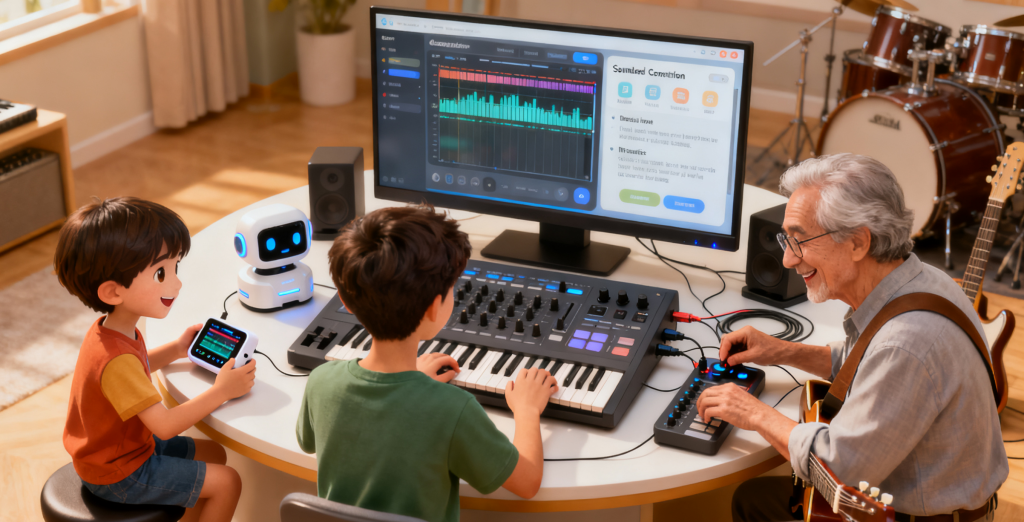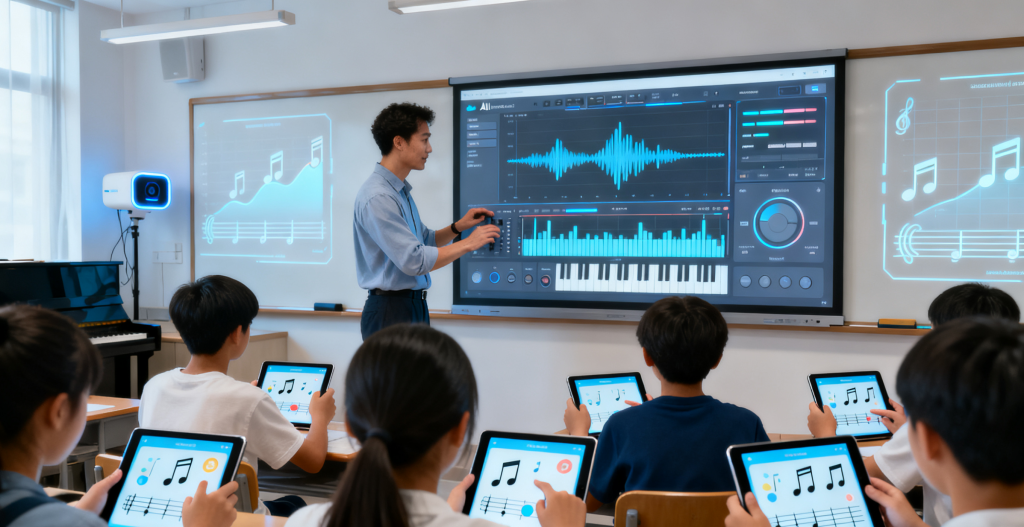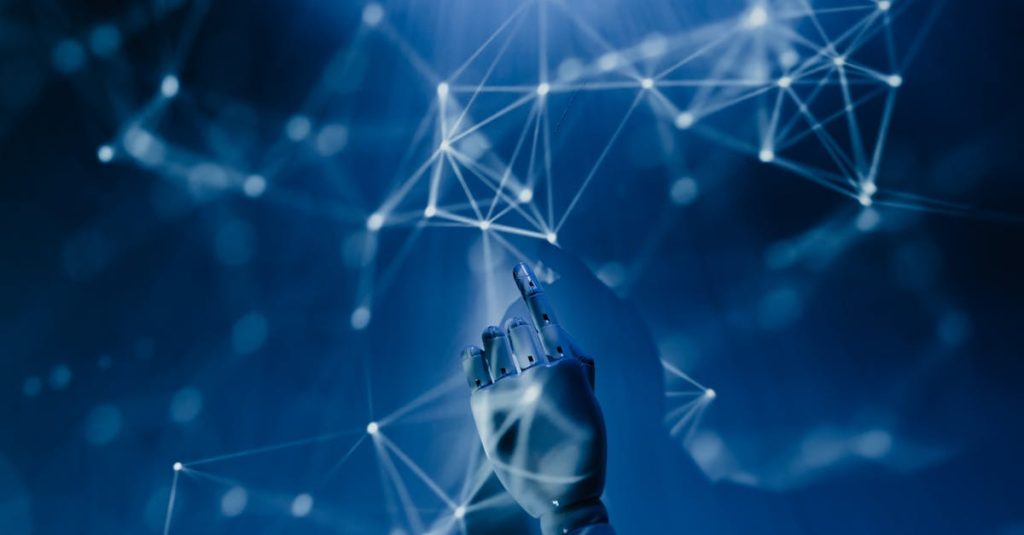Artificial intelligence is redefining how musicians learn and producers innovate by seamlessly blending generative AI, machine learning, and interactive pedagogy. Readers will discover how AI music education tools personalize theory lessons, accelerate composition workflows, and spark creative breakthroughs. Many students struggle with abstract music concepts, and producers often face writer’s block or time constraints; AI-driven solutions promise to close these gaps. This article explores:
- What AI music production tools are and how they function
- AI’s role in reshaping music education pedagogy
- Ways AI accelerates producer creativity and streamlines workflows
- Emerging trends, ethical considerations, and future outlook
- Actionable strategies for maximizing AI in songwriting and multimedia projects
- Common concerns around accessibility, privacy, and creative ownership
- How Mureka’s AI Music Creation Platform exemplifies these advances
By weaving practical insights with examples from leading platforms, this guide equips musicians, content creators, producers, and hobbyists to harness AI music education and composition tools for greater inspiration and efficiency.
What Are AI Music Production Tools and How Do They Work?

AI music production tools combine generative algorithms, data-driven modeling, and real-time analysis to automate composition, arrangement, and mixing tasks. These platforms ingest large datasets of melodies, harmonies, rhythms, and styles, then apply machine learning to craft novel instrumental tracks in seconds. The result is an immediate source of musical ideas, reducing creative friction and empowering users to explore new sonic territories.
To illustrate core components, the table below maps key technologies to their functions and benefits:
| Technology | Function | Key Benefit |
|---|---|---|
| Generative AI | Automatically composes melodies | Rapid idea generation |
| Machine Learning | Adapts to user preferences | Personalized musical suggestions |
| Audio Analysis | Extracts tempo, key, mood | Seamless integration with DAWs |
| Neural Synthesis | Creates realistic instrument tones | High-quality sound design |
These foundational elements drive features such as chord progression suggestions, style transfers, and automated mixing. The next subsection examines how these AI modules power composition and generation at scale.
Which AI technologies power music composition and generation?
AI music generation relies on neural networks trained on vast catalogs of compositions. Generative adversarial networks and transformer-based models analyze harmonic structures and rhythmic patterns, then predict subsequent notes or textures. By learning relationships between chords, melodies, and instrumentation, these systems craft cohesive arrangements that reflect stylistic nuances.
How do AI music tools assist musicians, producers, and hobbyists?
AI tools provide adaptive suggestions at every stage of the creative process. Beginners receive chord diagrams and basic theory explanations, while experienced producers benefit from automated stems, sample recommendations, and mixing presets. This inclusive design democratizes composition and invites hobbyists to experiment without deep technical expertise.
What features define leading AI music composition software?
Top AI composition platforms offer multi-track session support, real-time parameter tweaking, and integration with traditional digital audio workstations. Features often include style-based generation, interactive score editors, and stem-level controls that allow granular refinement. These capabilities accelerate creative workflows while preserving artistic intent.
How Is AI Changing the Landscape of Music Education?
AI is transforming music education by introducing interactive, data-driven learning experiences that adapt to each student’s strengths and challenges. Intelligent tutoring systems analyze performance in real time, offering targeted exercises in ear training, rhythm, and harmony. These adaptive modules promote faster skill acquisition and increased student engagement.
AI-powered platforms enable educators to assign customized lesson plans, track progress through analytics, and deliver instant feedback on technique and theory. This level of personalization elevates traditional curricula and supports differentiated instruction for diverse learning needs. As students master basic concepts, AI tools introduce advanced topics like orchestration or jazz improvisation, ensuring a continuous learning trajectory.
Key benefits include:
- Interactive theory drills that adjust difficulty based on accuracy
- Real-time score evaluation with visual and auditory feedback
- Gamified practice sessions that sustain motivation
These features foster deeper understanding and self-paced progression, preparing learners for both academic and professional pursuits in music. The next section explores classroom applications of platforms like Mureka’s AI environment.
In what ways do AI tools support interactive music theory education?
AI-driven theory modules present concept quizzes, chord recognition drills, and rhythm matching exercises that respond to learner input. By analyzing errors and response times, the system customizes subsequent tasks to reinforce challenging topics.
How can AI personalize music learning experiences for students?
Adaptive learning engines track each student’s progress, identifying gaps in knowledge and adjusting lesson sequences. This ensures that fundamentals are mastered before introducing complex concepts.
What are the benefits of using AI platforms like Mureka in music classrooms?
Platforms such as the Mureka AI Music Creation Platform democratize access to composition tools and theory exercises. Educators can leverage its instrumental generation and editing features to illustrate concepts in real time, bridging theory and practice seamlessly.
How does AI facilitate hands-on composition and arrangement learning?
Generative modules produce stems and chord progressions that students can dissect and modify, reinforcing arrangement techniques and fostering creative experimentation in a guided environment.
How Do AI Music Tools Enhance Producer Creativity and Workflow?

AI-assisted composition opens new creative avenues by offering instant melodic and harmonic suggestions tailored to a producer’s project goals. Rather than starting from a blank slate, producers can select AI-generated ideas, accelerate ideation, and focus on refining arrangements and sound design. This synergy of human intuition and algorithmic inspiration leads to richer, more diverse musical outputs.
Customizable AI editing features provide granular control over tempo, instrumentation, and dynamics, enabling artists to sculpt AI-generated stems into fully-realized productions. From adjusting rhythmic patterns to reshaping sonic textures, producers retain artistic oversight while benefiting from algorithmic efficiency. Integration with digital audio workstations ensures seamless workflows, allowing users to import AI stems as MIDI or audio files for further mixing.
Key workflow enhancements include:
- Automated stem creation for rapid sketching
- Style-based parameter presets for consistent sonic identity
- Real-time suggestion panels that adapt to session context
These capabilities reduce technical overhead, granting producers more freedom to explore bold ideas. The following section examines specific integration mechanisms with traditional DAWs and collaboration platforms.
How does AI-assisted composition open new creative avenues for producers?
AI models generate chord progressions, bass lines, and rhythmic motifs that serve as springboards for novel musical directions. By iterating on AI suggestions, producers uncover unexpected harmonies and textures.
What role does customizable AI music editing play in artistic refinement?
Granular controls over note velocity, quantization, and instrument timbre allow producers to fine-tune AI outputs, ensuring that algorithmic ideas align with their sonic vision.
How do AI tools integrate with traditional digital audio workstations (DAWs)?
Most AI platforms export stems as standard MIDI or audio tracks, which can be imported into popular DAWs for mixing, mastering, and further editing. This interoperability preserves established workflows.
How can AI collaboration platforms foster creative partnerships?
Cloud-based AI environments enable multiple users to co-create in real time, sharing project files, version histories, and comment threads to coordinate creative decisions and accelerate joint workflows.
What Are the Future Trends of AI in Music Education and Production?
AI in music will continue evolving through advancements in deep learning, real-time audio synthesis, and immersive technologies. Future platforms may offer virtual instructors powered by conversational AI, providing personalized coaching and contextual guidance in composition and performance. Curriculum design will increasingly incorporate data analytics, enabling educators to refine lesson sequences based on aggregated learning outcomes.
Emerging tools will leverage spatial audio and augmented reality to create multi-sensory learning environments, reinforcing theoretical concepts through immersive simulations. In production, neural synthesis techniques will generate hyper-realistic instrument emulations, expanding the palette of sounds available to artists. In parallel, ethical frameworks will guide responsible AI use, addressing concerns around copyright, creative ownership, and algorithmic bias in training datasets.
These trends present new opportunities for hobbyists and content creators to explore novel genres, collaborate across borders, and publish AI-assisted tracks directly to streaming platforms. As AI democratizes access, communities of learners and producers will drive collective innovation, shaping the next era of music creation.
How will AI shape the future of music learning and curriculum design?
AI analytics will enable dynamic curriculum adjustments, ensuring that theoretical lessons align with individual progress and emerging industry needs.
What emerging AI music technologies are influencing producer creativity?
Next-generation neural synthesis and style transfer models will expand the range of available sounds and compositional approaches for producers.
How might ethical considerations impact AI music tool development?
Responsible AI frameworks will address data provenance, fair compensation for sampled material, and transparent algorithmic processes to protect creative rights.
What opportunities exist for hobbyists and content creators with AI music tools?
AI platforms will lower entry barriers, allowing non-experts to produce professional-quality tracks, experiment with niche genres, and integrate music seamlessly into multimedia projects.
How Can Musicians and Content Creators Maximize AI Music Tools for Success?
Musicians can leverage AI for songwriting by using generative modules to sketch chord progressions and melodies, then layering their own performances over AI-generated stems. Structured workflows—starting with AI ideation, moving to manual arrangement, and finishing with AI-assisted mixing—maximize creative output while minimizing technical friction.
Content creators can enrich videos, podcasts, and games with AI-generated soundtracks that adapt dynamically to narrative elements. By selecting style presets and customizing tempo and mood, creators ensure that music aligns with their storytelling goals. AI tools also simplify rights management by generating royalty-free compositions on demand.
To master these platforms, users should explore tutorials, community forums, and hands-on exercises. Many AI music tools offer interactive walkthroughs, while third-party educators publish in-depth video courses and written guides. Combining structured learning with experimentation accelerates proficiency and inspires new uses.
Mureka’s AI Music Creation Platform empowers diverse user groups through its intuitive interface, style-based generation, and robust editing suite. Whether for education, professional production, or hobbyist exploration, Mureka supports scalable creativity across skill levels.
What strategies help musicians leverage AI for songwriting and arrangement?
Starting with AI-generated chord sequences and melodic fragments, musicians can refine ideas by adding personal performance elements and adjusting harmonic variations.
How can content creators use AI-generated music to enhance their projects?
By selecting mood and style presets, creators can rapidly produce bespoke soundtracks that align with visual narratives and pacing.
What learning resources and tutorials support mastering AI music platforms?
Official documentation, interactive demos, community-driven forums, and video courses provide structured guidance and best practices for AI-assisted composition.
How does Mureka’s AI platform specifically empower diverse user groups?
Mureka combines global genre models, adaptive editing controls, and an accessible interface to bridge experience levels from beginners to professional producers.
What Are Common Questions About AI Music Tools in Education and Creativity?

Students and creators often ask about accessibility, creative ownership, and genre scope when adopting AI music tools. Answers clarify usability and ethical considerations, enabling informed adoption.
How accessible are AI music tools for beginners and non-experts?
Modern AI platforms feature intuitive drag-and-drop interfaces, guided presets, and contextual tutorials that allow beginners to generate full compositions without prior theory knowledge.
Can AI replace human creativity in music production?
No, AI serves as a creative assistant by generating ideas and automating technical tasks; human artists remain essential for interpretive choices, emotional nuance, and cultural context.
What types of music genres can AI music tools generate?
AI models can produce styles ranging from electronic dance music and hip-hop to orchestral scores and jazz improvisations, depending on the training dataset and user-selected parameters.
How secure and private is user data on AI music platforms?
Leading platforms employ encryption, anonymized usage analytics, and clear privacy policies to protect user projects and personal information.
How Does Mureka’s AI Music Creation Platform Exemplify AI’s Impact on Music?
Mureka’s AI Music Creation Platform demonstrates the convergence of machine intelligence and creative expression by offering end-to-end composition and editing tools. Its neural synthesis engine generates realistic instrument stems, while its style adaptation module tailors outputs to user preferences. As both an educational resource and production assistant, Mureka embodies the democratization of advanced music technology.
What unique features does Mureka offer for AI-assisted composition?
Mureka provides genre-specific templates, interactive scoring editors, and on-the-fly modulation controls that streamline idea generation and arrangement refinement.
How does Mureka support music education through interactive tools?
Educators can assign AI-generated exercises in harmony and rhythm, then review student compositions with built-in analysis and feedback features that reinforce learning objectives.
In what ways does Mureka democratize music production for all skill levels?
By combining preset-driven workflows with granular editing options, Mureka allows beginners to start quickly and experts to dive deep, ensuring broad accessibility without sacrificing depth.
How can users explore and refine AI-generated music on Mureka?
Users import generated stems into the built-in editor, adjust tempo and instrumentation in real time, and export finalized tracks for further mixing or classroom demonstration.
This exploration of AI music tools reveals how generative algorithms, adaptive education modules, and collaborative platforms converge to empower musicians, producers, and learners. By embracing AI-assisted composition, personalized pedagogy, and streamlined workflows, creatives can unlock new avenues of expression. As platforms like Mureka continue to evolve, the boundary between human inspiration and machine intelligence will blur, leading to richer learning experiences and ever-more innovative musical creations.



